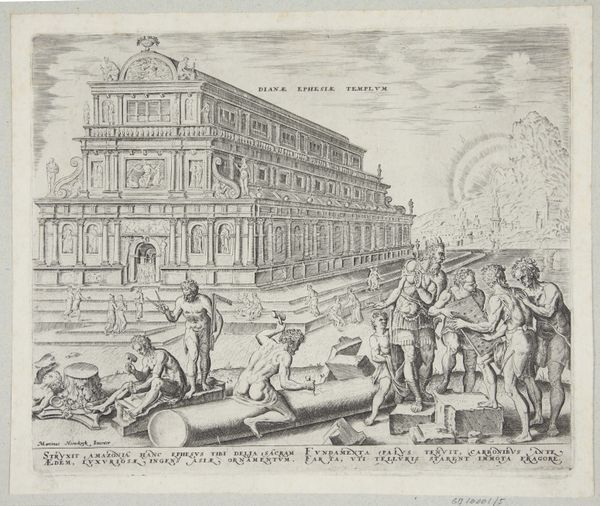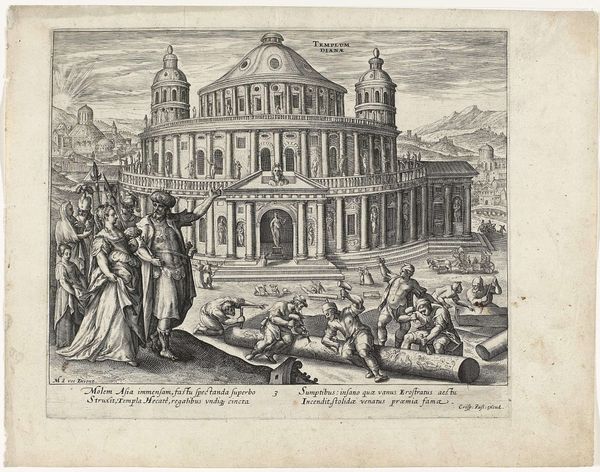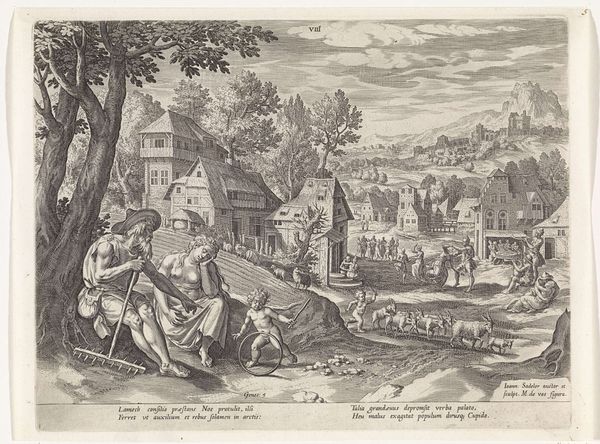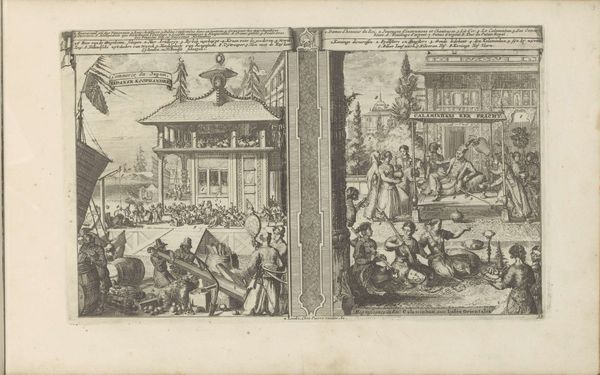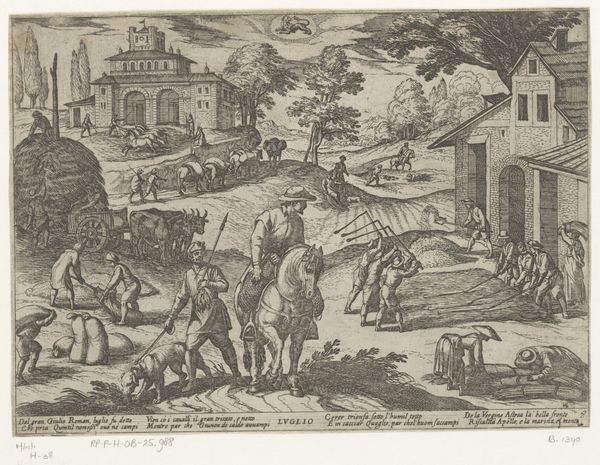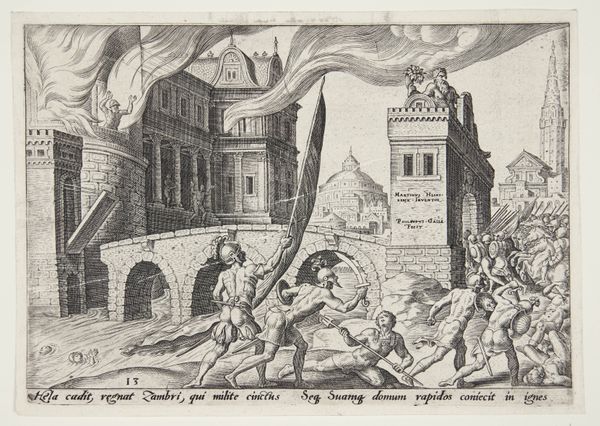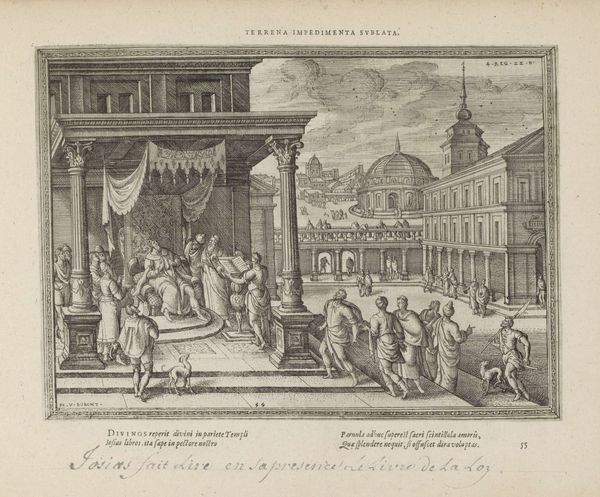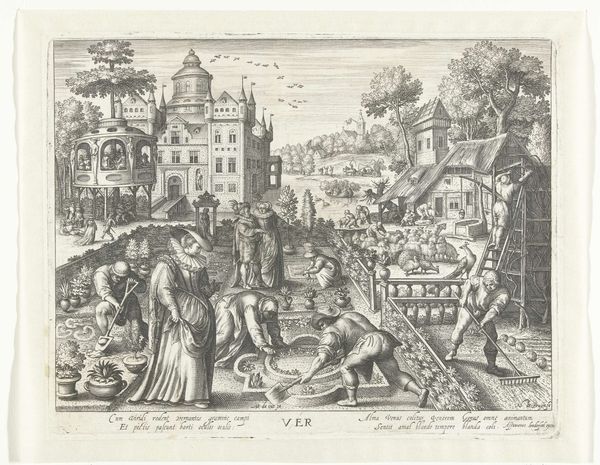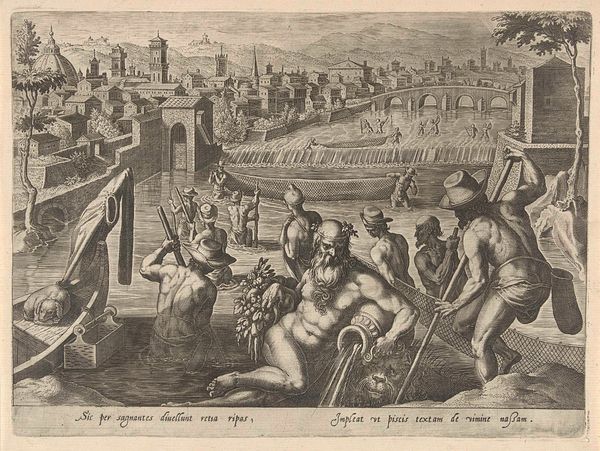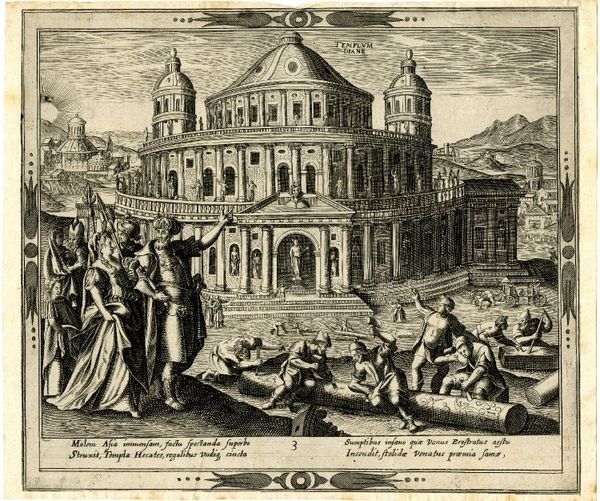
print, engraving, architecture
# print
#
perspective
#
11_renaissance
#
cityscape
#
history-painting
#
engraving
#
architecture
Dimensions: height 214 mm, width 264 mm
Copyright: Rijks Museum: Open Domain
Philips Galle made this engraving of the Temple of Diana at Ephesus in the late 16th century. It's a print, meaning that the image was incised into a metal plate, inked, and then transferred to paper. Look closely, and you can see the fine lines that define the architecture and the figures in the foreground. The technique of engraving has a significant relationship with industrial production. It was a crucial method for reproducing images, disseminating knowledge, and standardizing visual information across Europe at the time. Galle’s skillful engraving allowed for the widespread distribution of this image of the Temple. But look at the figures at the bottom. Galle depicts the temple not as a finished monument, but as a construction site. We see laborers, presumably enslaved, hard at work fashioning the very elements of the Temple. Galle is subtly reminding us that magnificent architecture is always the product of tremendous human effort. In this sense, the print reveals the social context behind the Temple of Diana. It's a monument not only to religious devotion, but also to labor, class, and power.
Comments
No comments
Be the first to comment and join the conversation on the ultimate creative platform.
